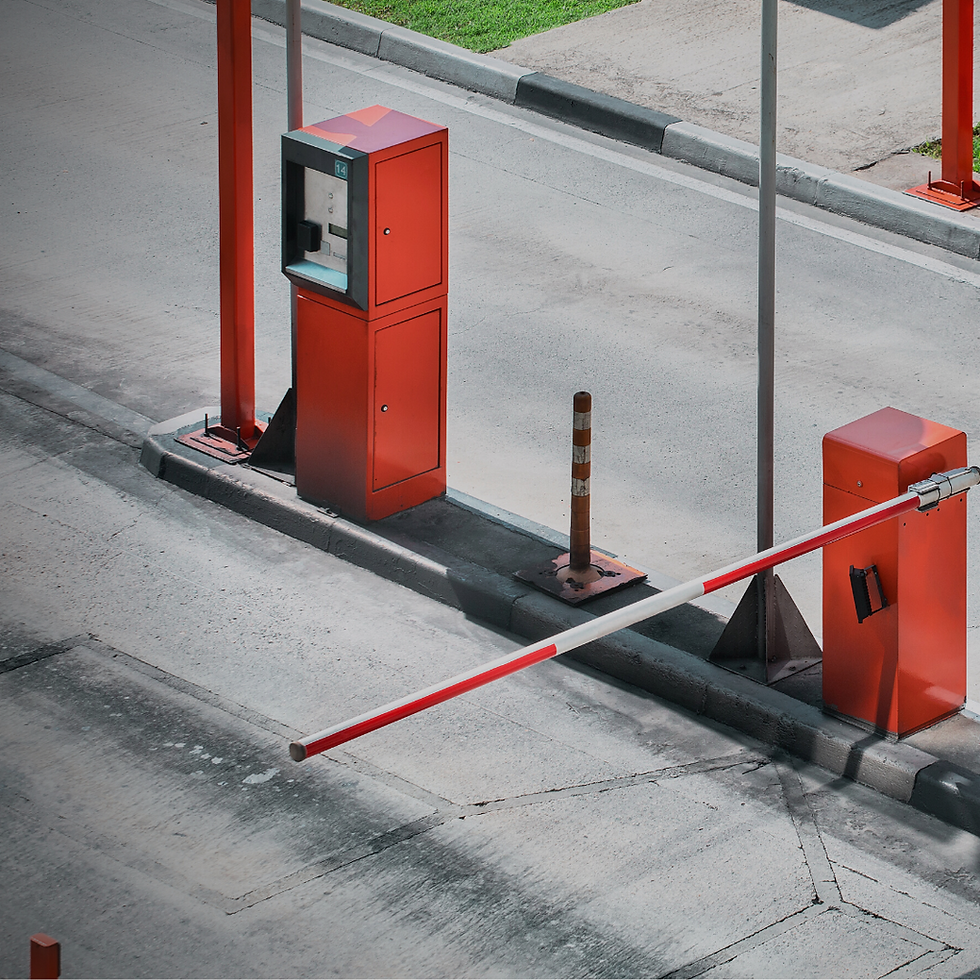Going Gateless: What you should consider.
- Nate Ferraco

- Oct 3, 2022
- 3 min read
Updated: Jan 6

Love it, or hate it, change is inevitable. As our society embraces a digital transformation, analog solutions are quickly becoming obsolete.
Everything, including parking permits, enforcement and payment solutions are going virtual.
The Parking Access Revenue Control Systems (PARCs) has traditionally utilized parking ticket dispensers to control parkers’ access to paid or permitted parking lots or garages alongside the increasingly expensive and liability-driven gate arm. Fortunately, over the last five years, our industry has seen an evolution of innovation in PARCs to remove the once popular gated option, and move towards utilizing digital tools for parking control.
Why should you consider going Gateless?
In some operations, a gate might be the best option. However, gates often have their own issues and liabilities, including creating wait times during peak operating hours, even if the technology uses near field communication (NFC), blue-tooth technology or other touchless options to raise the gate.
The issue is still the gate. It’s a barrier. Often, removing a gate altogether removes friction points for parkers and creates a more seamless parking experience. But if you're not using tickets, how else can you keep track of parkers and ensure timely payment? Here are a few Gateless PARCs options that might work for you.
Gateless PARCs Options:
Application Programming Interfaces (APIs)
APIs allow for real-time connection between separate online software applications. In most cases, digital software can allow and communicate directly with APIs of other systems with minimal customization. This should be considered in your search for a software partner.
Pay-by- Plate (PBL)
Pay by plate allows for vehicles to utilize virtual permits, with minimal effort on both the parker and parking enforcement. Given every vehicle on the road has a license plate, the industry has discovered that it is advantageous to use this unique identifier as a Permit ID.
License Plate Recognition (LPR)
While not a particularly new technology, its use in parking is becoming increasingly popular. Whether it’s handheld or fixed, LPR typically uses infrared cameras to read the parkers’ license plate and can quickly identify if they should or should not be parked there. LPR is fast, easy and seamless for both the parker and enforcement as it can be totally automated on the backend, depending on the enforcement system you choose. LPR can easily integrate with enforcement software, PARCs systems, permit and validation systems, pay-by-phone and pay-by-plate systems.
To Get Started:
Is your operation considering going gateless? Here are three key components you'll need as part of your gateless solution.
1. License Plate Recognition (LPR)
Identify the LPR technology provider, which as mentioned, can be either Mobile LPR or Fixed LPR. The LPR camera checks and verifies the Permit ID (License Plate).
If you’re using Mobile LPR, this will be used to check vehicles while they are parked in the facility.
If it is Fixed LPR, this will be placed at the entry or exit, to check the vehicle as it enters or exits the facility.
2. Online Payment
Determine the means for your customer to purchase their parking or permit. This can be done online beforehand or once they’ve parked. Signage and communication is critical for ensuring compliance with the process.
3. Enforcement
Consider how you will enforce it. Whether you utilize an enforcement team or completely automate the process with LPR cameras at the entrance, make sure you think through the entire parker experience from beginning to end. When you choose a technology partner, look for a partner that has a full-cycle solution that gives your parkers the option to pay, and you, the option to enforce, utilizing the same technology.
Benefits of Going Gateless
Simply put, the convenience and ease of use is unrivaled by any of the other systems out there. The parker can purchase their permit beforehand or while parked, eliminating the need to visit a pay station or stop at the entrance or exit and ultimately, reducing any potential gridlock.
In our experience, going gateless typically increases compliance with the right communication, signage and system in place. The easier you make it for your parkers, the more likely they will comply.
Other Benefits:
Reduce Hardware Costs (Equipment, Maintenance, etc): With integrations focused on entry and exit, your Parking System with LPR technology will reduce hardware costs.
Enhances the parker experience eliminating barriers, increasing their Time to Park (TTP), and ensures better compliance rates.
Going gateless is not only a way to improve customer satisfaction, but also a way to ensure operational efficiency. It creates a seamless and accurate parking experience both for you and your customer.
Contact iParq to learn more information, or give us a call at (805) 963-9400.



Comments